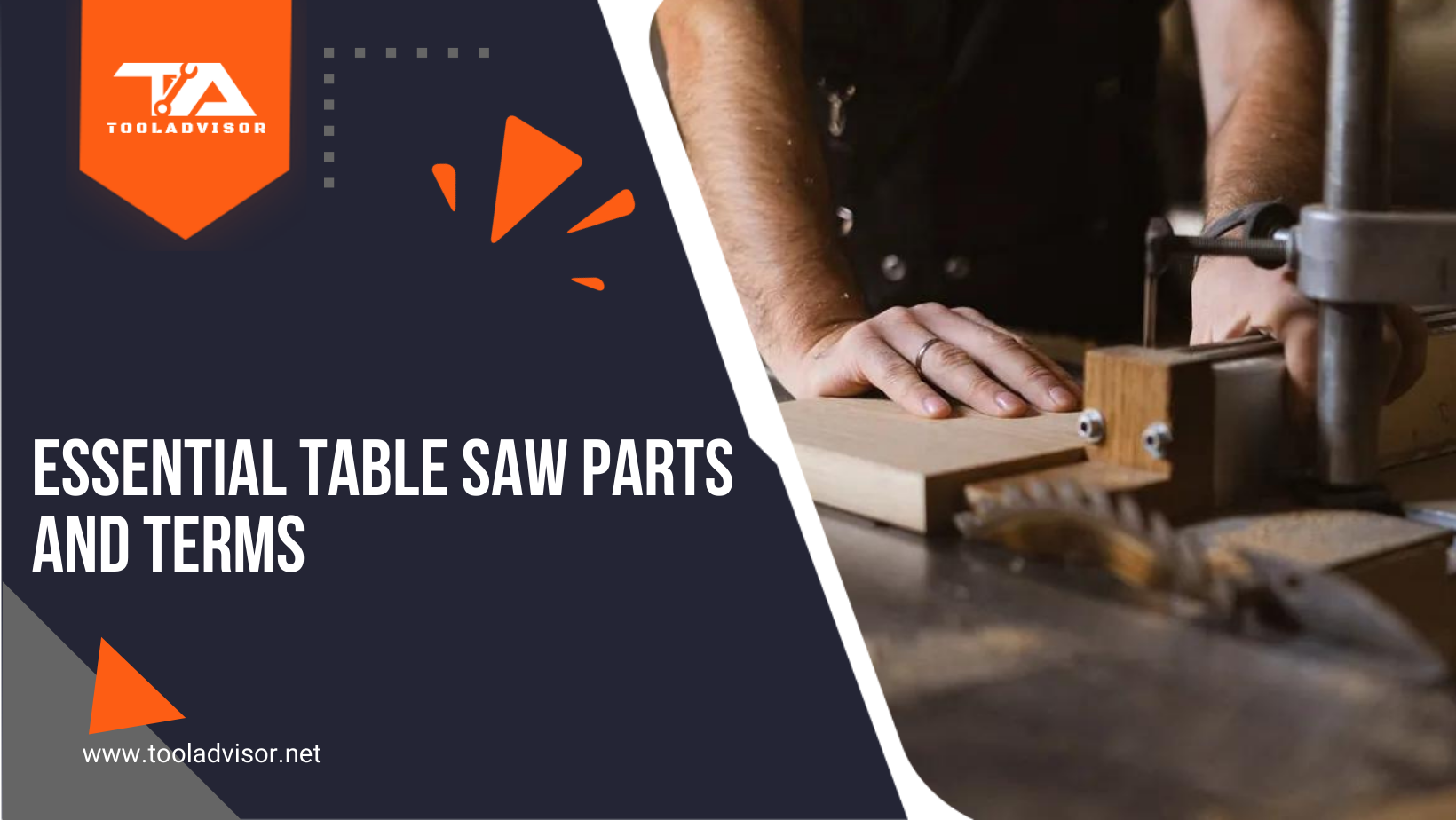Essential Woodworking Tools for Beginners
The following is a glossary list of common definitions, terms, and phrases used as they relate to table saws and woodworking in general.
If you’re interested in buying a table saw, become familiar with these woodworking terms for understanding features, assembling, adjusting or operating your table saw.
Anti-Kickback Pawls (radial arm and table saws)
A device that, when properly installed and maintained, is designed to stop the workpiece from being kicked back toward the front of the saw during a ripping operation.
Arbor
A metal shaft extending from the drives implement that is the mounting location for the saw blade.
Bevel Cut
A cutting operating make with the blade at any angle other than 90° to the table surfaces.
Blade Guard Assembly
Metal or plastic protection device that mounts over the saw blade. Its function is to intercept the operator from coming into contact with the saw blade.
Compound Cut
A cross-cut made with both a miter and a bevel angle.
CrossCut
A cutting or shaping operation made across the grain or the width of the workpiece.
Cutter head (planers and jointer planers)
A rotating cutter head with adjustable blades or knives. The blades or knives remove material from the workpiece.
Dado Blade
Blade or set of blades that are used to cut grooves and rabbets.
Dado Cut
Cutting operation that use a dado blade to cut a flat bottomed groove into the faces of the workpiece.
Feather Board
Safety device used to keep the workpiece against the rip fence and against the table surface.
FPM or SPM
Feet per minute (or strokes per minute), used in reference to blade movement.
Freehand
Performing a cut unaccompanied by the workpiece being guided by a fence, miter gauge, or other aids.
Gum
A sticky, sap-based residue from wood products.
Heel
Alignment of the blade to the fence.
Kerf
The resulting cut or gap in the workpiece after the saw blade passes through during a cutting operation.
Kickback
An event in which the workpiece is propelled back towards the operator at a high rate of speed.
Miter Cut
A cutting operations build with the workpiece at any angle to the blade other than 90°.
Non-Through Cut
A cut in which the blade does not cut through the thickness of the workpiece.
Parallel
Being an equal distance apart at every point along two given lines or planes (i.e. the rip fence face is collateral to the face of the saw blade).
Perpendicular
Lines or planes that intersect and form right-angles (i.e. the blade is perpendicular to the table surface).
Pilot Hole (drill presses)
A small hole drilled in a workpiece that serves as a guide for drilling wide holes accurately.
Push Blocks (for table saws)
Device used to hold the workpiece during cutting operations. This aid keeps the operator’s hands well away from the blade. Visit for the push block reviews.
Push Stick
A safety device used to push the workpiece through a cutting operation. Used most often when rip cutting thin workpieces. The aid helps repose the operator’s hands well away from the blade.
Rabbet
Cutting operation that creates an L-shaped channel along the edge of the workpiece.
Resaw
A cutting operation to shorten the thickness of the workpiece to make thinner pieces.
Resin
A sticky, sap-based substance that has hardened.
Revolutions Per Minute (RPM)
The figure of turns completed by a spinning object in one minute.
Rip-Cut
Cutting operation in which the rip fence is used to cut across the length of the workpiece.
Riving Knife/Spreader/Splitter
Metal plate located behind the blade. It sustains the kerf opening in the wood when performing a cutting operation.
Saw Blade Path
The place over, under, behind, or in front of the blade. As it applies to the workpiece, that area which will be or has been cut by the blade.
Set
The distances that the tip of the saw blades tooth is bent (or set) outward from the face of the blade.
Snipe (planers)
Depressions made at either end of a workpiece by cutter blades when the workpiece is not properly supported.
Straightedge
A tool used to check the flatness, parallelism, or consistency of a surface(s).
Thin Kerf Blade
A blade with a kerf or depth that is thinner than a standard blade. Click Here for more information.
Through Cut
A cut in which the blade cuts completely through the thickness of the workpiece.
Throw-Back
The throwing back of a workpiece usually caused by the workpiece being dropped into the blade or being placed inadvertently in contact with the blade.
Workpiece or Material
The item on which the operation is being done.
Worktable
Surfaces where the workpiece material rests while performing a cutting, drilling, planing, or sanding operation.
I hope you found this post helpful. For a wide range of reviews visit: table saw reviews.
